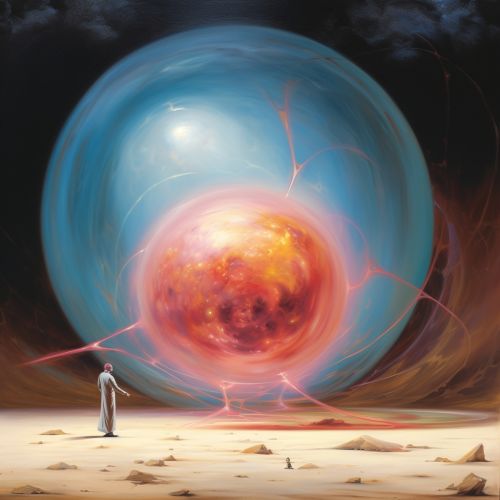Weakly Interacting Massive Particles (WIMPs)
Introduction
Weakly Interacting Massive Particles (WIMPs) are a hypothetical class of particles that are candidates for dark matter, a form of matter that accounts for approximately 85% of the matter in the universe and about a quarter of its total energy density. The abundance of dark matter in the universe is inferred from its gravitational effects on visible matter, radiation, and the large-scale structure of the universe.


Theoretical Background
WIMPs are a type of dark matter particle, with a typical mass on the order of 100 GeV/c² (approximately 100 times the mass of a proton). They interact via the weak nuclear force and gravity, and possibly through other interactions no stronger than the weak force. WIMPs are non-relativistic ("cold") dark matter, as opposed to "hot" or "warm" dark matter. This means they moved slowly compared to the speed of light since their decoupling from the rest of the particles in the universe, which allows for the formation of structures like galaxies and clusters of galaxies.
Experimental Searches
The search for WIMPs often involves looking for signals of their interactions with ordinary matter. There are three main types of experiments that aim to detect WIMPs: direct detection, indirect detection, and production at colliders such as the Large Hadron Collider (LHC).
Direct Detection
Direct detection experiments aim to observe the scattering of a WIMP off a nucleus in a detector. These experiments are located deep underground to shield from cosmic rays, which could mimic a WIMP signal. Examples of direct detection experiments include XENON1T, LUX, and SuperCDMS.
Indirect Detection
Indirect detection experiments aim to observe the products of WIMP annihilations or decays. These experiments look for excesses of particles such as photons, neutrinos, or cosmic rays that could result from WIMP annihilations or decays. Examples of indirect detection experiments include Fermi-LAT, IceCube, and H.E.S.S..
Collider Searches
Collider experiments aim to produce WIMPs in high-energy collisions and infer their presence from missing energy and momentum in the detector. The LHC is currently the leading experiment in this category.
Constraints and Results
Despite extensive searches, as of 2021, no experiment has conclusively detected a WIMP. This has led to stringent constraints on the properties of WIMPs, such as their mass and interaction cross-sections. These null results have also motivated the consideration of alternative dark matter candidates and theories.
See Also
- Dark Matter
- Neutrino
- Large Hadron Collider
- Fermi Gamma-ray Space Telescope
- IceCube Neutrino Observatory
